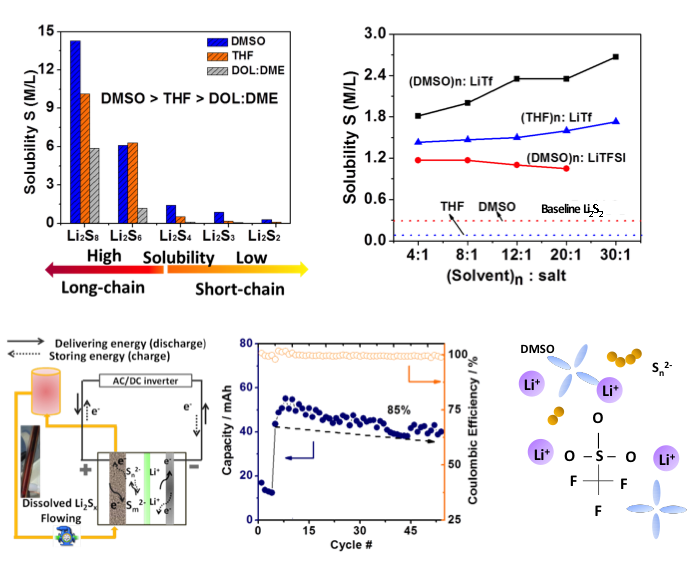
(Bottom) A successful demonstration of a liquid-phase Li-S redox flow with an extremely high coulombic efficiency, close to 100 percent, and a high capacity retention of 85 percent over 50 cycles.
Scientific Achievement
The factors that govern the solubility of various polysulfides were identified. LiTf with strong ionic association strength increases the solubility of short-chain species significantly. A solution Li-S flow cell was demonstrated using LiTf as additive in the polysulfide catholyte.
Significance and Impact
This work successfully correlates the fundamental solution chemistry to the final electrochemical performance of redox flow batteries, thus providing important guidance for Li-S battery technology.
Research Details
- Solvent and anion effects on the solubility of polysulfide with different chain lengths were carefully investigated. Raman and Uv-vis spectra indicated that the Tf- anion plays an important role to enhance the dissolution of short-chain species.
- Li2Sx catholyte with LiTf additive was applied in a liquid-phase Li-S flow cell with high coulombic efficiency and decent capacity retention.
Work performed at Pacific Northwest National Laboratory (JCESR partner) by H. Pan , X. Wei , W. Henderson , Y. Shao , J. Chen , P. Bhattacharya , J. Xiao , and J. Liu, Adv. Energy Mater. 2015.

